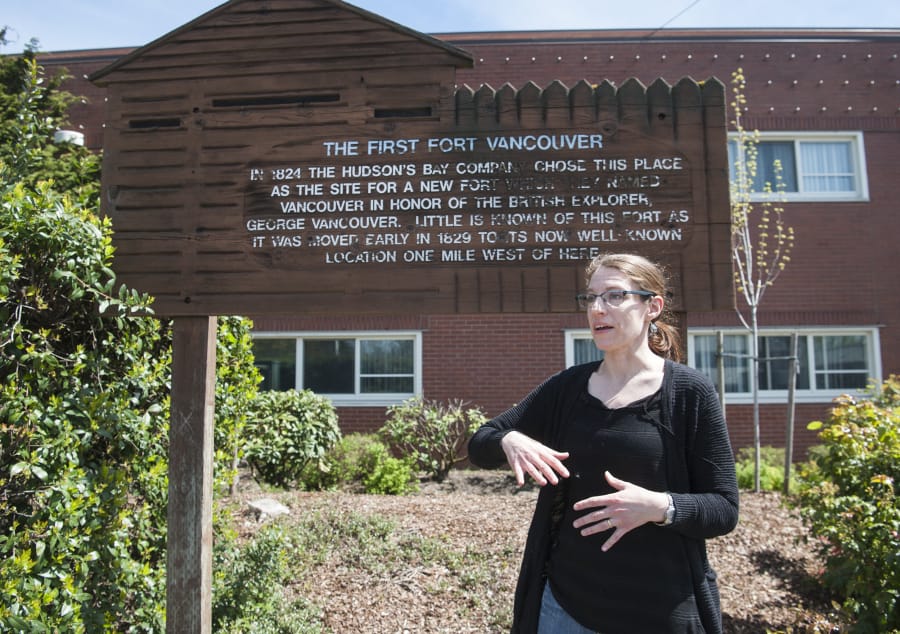“The fort site is in a residential neighborhood, and hopefully, I will be excavating on people’s properties, so I will need a lot of help,” Clearman said.
But wait! Isn’t there already a Fort Vancouver, complete with replica wooden stockade, adjacent to Pearson Field?
Yes. That fort is where the Hudson’s Bay Company relocated in 1829. After four years on the bluff, the fort’s managers realized that hauling everything a mile or so up that hill from the river (including water) was not practical.
And the neighboring tribes were no threat, so there was no need for a more secure, defense-focused position on the high ground.
The 1829 version of Fort Vancouver — now a National Park Service site — was the regional headquarters of the Hudson’s Bay Company’s fur-trading operation for about 30 years. The Hudson’s Bay Company abandoned the post in 1860, in the face of a growing American presence, and headed for Canada.
Eventually, the community lost track of the precise locations of both forts sites: the one built in 1825 and the relocated version that now is a national park.
Still, community leaders knew the Hudson’s Bay Company fort played a formative role in Vancouver’s history. A marker attesting to that fact was installed in 1925 near Evergreen and Grand boulevards as part of the city’s centennial celebration.
“It isn’t the site of the fort,” Clearman pointed out.
“It’s unclear why they picked this spot” for the marker, on the west side of Washington School for the Deaf, 611 Grand Blvd.
Maybe a city leader thought that “this seems like a good spot for a fort. Or there was evidence that has been lost to time,” said Clearman, who is a graduate research assistant at Fort Vancouver National Historic Site.
While literally millions of pieces of the past (such as beads, bits of metal, glass shards and pieces of broken dinnerware) have been found in the historic site, “There are no artifacts related to the first fort,” she said.
Clearman’s project is an example of community archaeology, said Doug Wilson, National Park Service archaeologist. It is characterized by public involvement.
“Archaeology is better integrated into the communities in which we work and study,” said Wilson, also an adjunct associate professor at Portland State. “Amy’s study is a great example of community archaeology.”
“Including members of the public a lot more is a way to make archaeology relevant to people who aren’t archaeologists,” Clearman said.
Benefits for the residents include uncovering the heritage of their neighborhood and connecting them to the past, Clearman said.
Participation is strictly voluntary, Clearman said. A homeowner’s rights won’t be jeopardized if an artifact is found in the backyard.
“People are worried about these things. What I will address in my talk on May 23, and with the homeowners I will work with, is that participating in this project will not take away any of their rights as property owners. All participation is voluntary and they can stop participating at any time if they no longer feel comfortable. They get to choose how much excavation happens on their property, and where it happens.”
(The deepest she can dig is one meter.)
“If an archaeological site is found, they will not lose any of their private property rights, and no one can force them to allow large excavations,” Clearman said. “We will have to register the property as an archaeological site with the state, and that means they will have to get a special permit if they do any ground-disturbing activities like tree removal or additions to the home, for example. What they can do with their property will not be limited.”




